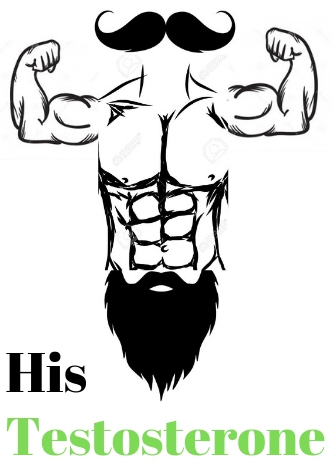Testosterone Facts
Crush Your Fitness Goals: The Best Testosterone-Boosting Workout Plan for Men
Testosterone is a hormone that plays a crucial role in the development of male reproductive tissues and the promotion of secondary sexual characteristics. It is also important for overall health and well-being, including muscle mass, bone density, and red blood cell production. In terms of fitness, testosterone is essential for building and maintaining muscle mass, increasing strength, and improving athletic performance.
Testosterone levels naturally decline with age, which can lead to decreased muscle mass, increased body fat, and reduced strength. However, there are ways to naturally boost testosterone levels through exercise, nutrition, and lifestyle factors. Understanding the role of testosterone in fitness is important for men who want to optimize their workouts and achieve their fitness goals.
The Importance of Testosterone-Boosting Workouts for Men
For men looking to maximize their fitness results, incorporating testosterone-boosting workouts into their exercise routine is essential. These workouts are designed to stimulate the production of testosterone, leading to increased muscle mass, strength, and overall athletic performance. By focusing on exercises that specifically target the major muscle groups and incorporate high-intensity training, men can naturally boost their testosterone levels and achieve their fitness goals more effectively.
Testosterone-boosting workouts typically involve compound movements such as squats, deadlifts, bench presses, and pull-ups, which engage multiple muscle groups at once and stimulate the release of testosterone. In addition to strength training, incorporating high-intensity interval training (HIIT) into a workout routine can also help to boost testosterone levels. By understanding the importance of testosterone-boosting workouts, men can take their fitness to the next level and achieve optimal results.
Building Muscle and Increasing Strength with Testosterone-Boosting Exercises
Building muscle and increasing strength are common fitness goals for many men, and testosterone-boosting exercises can help to achieve these goals more effectively. By incorporating compound movements such as squats, deadlifts, and bench presses into a workout routine, men can target multiple muscle groups at once and stimulate the production of testosterone. These exercises are essential for building muscle mass and increasing strength, as they require a high level of effort and energy expenditure.
In addition to compound movements, incorporating isolation exercises such as bicep curls, tricep extensions, and shoulder presses can also help to build muscle and increase strength. By targeting specific muscle groups with these exercises, men can achieve a more balanced and well-rounded physique. By understanding the role of testosterone-boosting exercises in building muscle and increasing strength, men can optimize their workout routine and achieve their fitness goals more effectively.
High-Intensity Interval Training (HIIT) for Testosterone Production
High-intensity interval training (HIIT) is a form of cardiovascular exercise that involves short bursts of intense activity followed by periods of rest or lower-intensity exercise. This type of training has been shown to be highly effective for boosting testosterone levels, as it stimulates the release of growth hormone and other anabolic hormones. By incorporating HIIT into a workout routine, men can naturally increase their testosterone levels and improve their overall fitness.
In addition to its testosterone-boosting benefits, HIIT is also effective for burning fat, improving cardiovascular health, and increasing athletic performance. This type of training can be done with a variety of exercises, including sprints, cycling, rowing, and bodyweight exercises. By understanding the benefits of HIIT for testosterone production, men can incorporate this type of training into their workout routine and achieve optimal results.
Incorporating Compound Movements for Maximum Testosterone Boost
Compound movements are exercises that engage multiple muscle groups at once and are essential for maximizing testosterone production. These exercises include squats, deadlifts, bench presses, pull-ups, and rows, which require a high level of effort and energy expenditure. By incorporating compound movements into a workout routine, men can stimulate the release of testosterone and achieve greater muscle mass and strength.
In addition to compound movements, incorporating isolation exercises such as bicep curls, tricep extensions, and shoulder presses can also help to target specific muscle groups and promote testosterone production. By understanding the importance of compound movements for maximum testosterone boost, men can optimize their workout routine and achieve their fitness goals more effectively.
Nutrition and Lifestyle Factors to Support Testosterone Production
In addition to exercise, nutrition and lifestyle factors play a crucial role in supporting testosterone production. Consuming a diet rich in protein, healthy fats, and micronutrients such as zinc and vitamin D is essential for maintaining optimal testosterone levels. In addition, getting enough sleep, managing stress levels, and avoiding excessive alcohol consumption can also help to support testosterone production.
In terms of nutrition, incorporating foods such as lean meats, fish, eggs, nuts, seeds, and leafy greens can help to support testosterone production. In addition, taking supplements such as zinc, vitamin D, and omega-3 fatty acids can also help to optimize testosterone levels. By understanding the importance of nutrition and lifestyle factors in supporting testosterone production, men can take a holistic approach to optimizing their fitness results.
Monitoring Progress and Adjusting Your Testosterone-Boosting Workout Plan
Finally, it is important for men to monitor their progress and adjust their testosterone-boosting workout plan as needed. This may involve tracking changes in muscle mass, strength gains, energy levels, and overall well-being. By paying attention to these factors, men can determine whether their workout routine is effectively boosting testosterone levels and achieving their fitness goals.
If progress is not being made or if there are signs of low testosterone levels such as fatigue, decreased libido, or mood changes, it may be necessary to adjust the workout plan or seek medical advice. This could involve changing the types of exercises being performed, adjusting the intensity or volume of workouts, or addressing any underlying health issues that may be affecting testosterone production. By monitoring progress and making adjustments as needed, men can ensure that their testosterone-boosting workout plan is effective in achieving their fitness goals.
Discover more from His Testosterone
Subscribe to get the latest posts sent to your email.
